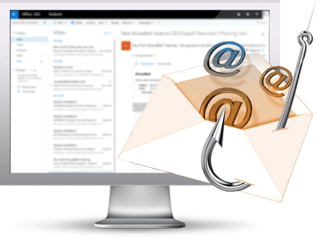
You surf the world wide web, you scroll through social media feeds, read articles, shop online, and respond to email through the incredible invention of the internet. We're all driving on the internet superhighway, but are we aware of what it means to be safe when we're online? You know when driving in a car, you need to wear your seatbelts. You need to signal when changing lanes (well, some people do), and at a stop sign, make sure the car comes to a "full and complete" stop before waiting two seconds and proceeding forward if there is no other oncoming traffic.
People driving on the road find shortcuts or easier ways to evade some of the road's safety rules. You might not always signal when turning or changing lanes, and I've seen many people who roll through stop signs, where they slow down, and if traffic is not coming, they make the turn. While these aren't dangerous, people get comfortable with unsafe driving habits, which is very similar to unsafe internet surfing habits.
1. Double Check Links and Attachments Before Clicking
When you’re driving and the need arises to change lanes or turn onto another road, you have a flashing orange light on either side of the car to signal to other drivers your desire to change position. Like signaling a lane change or turning, users want to check any links or attachments they receive in their email. The email will not be malicious most of the time, like not signaling will not result in an accident. However, like not signaling, you run the risk the email is not malicious and could lead to a cybercriminal gaining access to your computer, the organization's network, or worse, leading to data theft and damage to the brand.
Cybercriminals will send phishing or socially engineered emails to thousands of email accounts with a message that may be too good to be true, like winning money or striking curiosity with an attached file containing information the user needs to see. The cybercriminal's expectation is not for everyone, but to get several people to open the email and click the link. When you receive emails, it's essential to be aware of proper thought processes, like "am I expecting this email?" or "do I know the sender?" or "why do I need to click the link?" Stopping and making sure the lane is clear or stopping to ensure the link is safe will provide a safer experience for you when surfing online.
2. Make Sure That Clickbait Isn't Malicious
Coming to a "full and complete" stop in the car allows you to take a moment and check for oncoming traffic before proceeding into the intersection or making a turn. This action is a moment to stop and verify traffic. When surfing the web, you will come across links, advertisements or memes, which are humorous images with a saying that spreads rapidly online. All of these encourage you to click and follow the story -- otherwise known as clickbait. These clickbait links help marketing companies track clicks of users interested in seeing the material. However, these advertisements may come from other third-party sources, which may not be vetted by the marketing service and can expose you to malicious code loading onto your device.
This code can allow cybercriminals to steal personally identifiable information, credit card numbers and other sensitive information. To guarantee a safer internet experience, when you sees those "too good to be true" or enticing messages about a celebrity's latest escapade, you may want to ignore it, or if it's really of interest, do an additional Google search to make sure that it's valid. This step provides the chance to get a reputable link and site to read about the story further and avoid the unnecessary opportunity to have malware installed on your system.
3. Be Aware of Webcam Security Issues
Putting on your seatbelt in the car is necessary to protect yourself while driving. In the unfortunate event that you have a fender bender or another type of car accident, it reduces the risk of being thrown into the windshield or possibly smashing your head into the steering wheel. The seatbelt is designed to protect you while you're driving, and a webcam cover can protect you from hackers watching you online. You’re online all the time with your laptops, smartphones and tablets. Most times, you may not be aware or forget that you have a webcam staring back at you. These webcams are a target of predators when they gain access to someone's laptop.
Most cybercriminals go after Windows machines with webcams because they are easier to infect with malware, and most people do not cover their webcams. Cybercriminals are sophisticated to access the laptop and disable the LED light from turning on when they activate the camera. It's critical to either put a piece of tape over the lens or get a webcam cover, as they are inexpensive to buy online. Like the seatbelt to protect you while you’re driving, having a webcam cover can protect you from someone capturing you when they're in front of a computer.
Think Before You Click!
Whenever you’re online, you assume a risk that you could experience a data breach or hack by cybercriminals. This risk is similar to driving on the road, and we're alert to other drivers to avoid a car accident and suffer the potential increased costs of our driver's insurance. Unless you're a large organization, you can get cyber insurance, but not for individuals. You have to implement your risk measures to protect yourself online on an individual level. Whether that's checking email links to avoid a phishing attack, verifying clickbait articles that seem too good to be true or even putting tape over your webcam, these measures can provide you with an overall safer internet experience.
 Here's how it works:
Here's how it works:




